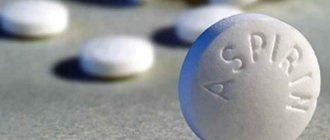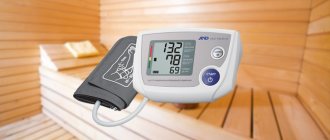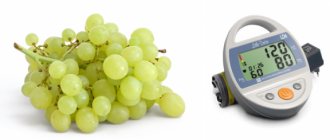The first drug with 2000% bioavailability
As long as you wait, your chances of getting rid of hypertension are decreasing!
To learn more…
When pressure rises, many negative consequences appear. The internal target organs suffer the most, namely the heart, kidneys, blood vessels, and brain. A pressure of 190 over 110 is considered critical and can cause death due to stroke or other complications. Such values indicate stage 3 hypertension. The disease refers to a severe form of progression, when it is no longer possible to achieve normal indicators, and the relative stability of the condition can only be maintained with medications. With such pressure, irreversible processes occur in patients.
What does 190/110 mmHg mean? Art.
A disease such as stage 3 hypertension is a dangerous form of pathology in which a pressure of 190/110 mm Hg appears. Art. Certain organs in the human body are already affected and cannot be cured. It is no longer possible to reduce the pressure to normal limits. If there is a sharp decline in indicators, then this indicates a heart failure, in which case you need to consult a doctor or call an ambulance.
With grade 3 hypertension, frequent hypertensive crises occur, often with fatal outcomes. As statistical data show, pathology is typical for:
- 40% men and 42% women under 50 years of age.
- 25% of men under 40 years of age, as a result of alcohol abuse.
The pathology appears after 60 years, but the risk increases as a result of aging, as well as concomitant diseases such as diabetes. For young people, stage 3 hypertension with readings of 190 over 110 is uncharacteristic. Such a disease can only occur after serious head injuries.
Medication assistance
If the tonometer indicates a pressure of 190/90 mmHg. Art. and more, you can use the following measures yourself:
- Place Enalopril under the tongue, which will begin to be effective after 15-20 minutes. Some doctors recommend using Clonidine during a crisis, but the medicine can only be purchased by prescription, and if hypertension is not diagnosed, then the use of the medicine is prohibited.
- Captopril and its analogues can lower blood pressure, but they have a slow effect.
- If there are no antihypertensive drugs in your home medicine cabinet, then you need to use diuretic tablets, among which are Furosemide and Trifas.
- In case of pain in the chest or heart, nitroglycerin is used. It is placed under the tongue and starts working in just 5 minutes. If after a quarter of an hour the symptom does not go away, then the dose can be repeated, but it must be taken into account that the pill reduces blood pressure.
- In case of increased blood pressure and crisis due to stress, it is necessary to take a sedative; Valocordin is used for this.
- If there are no medications at home and you have headaches, then take antispasmodics. They will relieve vascular spasms, the vessels themselves will expand, and the pressure will slightly drop.
Hypertensive patients need to know that blood pressure of 190/90 and other high values cannot be reduced suddenly. You need to take only one antihypertensive drug, and take measurements again after half an hour. If the values slowly decrease, then all you have to do is wait for the visit of emergency doctors.
If the doctors have not arrived after half an hour, the condition is not relieved by taking the pills, then you can take it again, but with a different drug with an identical effect. If you have experience and funds, you can give an intramuscular injection of 25% magnesium sulfate, 5 ml in volume.
Stages and degrees of risk
It is important to know!
STILL STRUGGLE WITH ARTERIAL HYPERTENSION INCORRECTLY? The first bioavailable drug with proven effectiveness Read more »
In medical practice, there are several stages of stage 3 hypertension:
- When there are no changes in internal organs.
- Several organs are affected.
- Many organs are affected, and complications such as heart attack and other things are observed.
With a pressure of 190 to 110, people experience certain risks, in the form of complications that appear from the blood vessels and heart. For hypertension, there are 4 forms of risk that appear over 10 years:
- The risk of complications is up to 15%.
- The appearance of pathologies in 15-20% of cases.
- Complications up to 30% of cases.
- Development of pathologies in more than 30% of cases.
People with blood pressure 190/110 mm Hg. Art. belong to risk group 3-4, because this condition indicates that some organs are already affected.
Prevention measures and prognosis
With a high blood pressure of 190 to 110, the prognosis is unfavorable. Such high rates lead to disruption of the functioning of the main internal organs and vital systems. If stage 3 or 4 hypertension is diagnosed, the likelihood of developing a heart attack or stroke due to high blood pressure remains high. The patient is sent to the hospital to monitor the condition so that the hypertensive crisis can be stopped in a timely manner.
To reduce the likelihood of severe consequences of a hypertensive crisis, it is necessary to monitor your health and take preventive measures:
- minimal physical activity;
- proper nutrition;
- weight control;
- quitting smoking and alcohol.
Doctors recommend establishing a proper sleep schedule, which should be at least 8 hours. If you suspect hypertension, you must regularly measure your blood pressure twice a day: morning and evening, and record them in a special diary. You should definitely visit your doctor twice a year.
Causes of pressure 190 to 110
The main reason for pressure 190 to 110 and the transition of the condition to stage 3 is characterized by insufficient, ineffective treatment of hypertension at earlier stages. This condition appears as a result of the patient himself, who did not adhere to the rules of treatment, or an incompetent doctor, who prescribed the wrong drugs.
In addition, the development of severe hypertension is influenced by other reasons, which include:
- Stress.
- Additional diseases, the course of which worsened with increasing pressure.
- Diabetes.
- Atherosclerosis.
Today, hypertension cannot be completely cured, but its development can be stopped and the appearance of certain symptoms and hypertensive crises can be eliminated.
Danger signs
When dangerous complications develop, specific manifestations develop:
- Intense, pressing pain behind the sternum (possible heart attack).
- Difficulty speaking, gait, inability to control facial muscles (stroke).
- Pain in the back (problems with the aorta).
- Choking (heart failure, swelling of the pulmonary structures).
The duration of a hypertensive crisis is from several hours to 2-3 days. The longer the condition lasts, the higher the likelihood of fatal or disabling complications.
Symptoms
Hypertension of this form and course is characterized by the same symptoms as a milder course of the disease. But in this case, damage to various target organs is added:
- Vessels. As pressure increases, the walls of blood vessels thicken, they narrow, and plaques form. This leads to circulatory failure.
- Organs of vision. The pathology causes visual impairment, complete blindness and retinal detachment are possible.
- Kidneys. Due to impaired blood flow, the kidneys are affected, their structure changes, and normal functioning is disrupted. Patients develop kidney failure and other problems. The blood is not able to filter normally, fluid is retained in the body, manifesting itself in the form of swelling of the limbs and other parts of the body.
- Heart. The ability to function normally is lost, and organ failure develops.
- Brain. Encephalopathy develops, the patient’s mental abilities decrease, and memory deteriorates. Blood clots form in the brain, leading to stroke.
Lesions of the described organs provoke the following symptoms:
- The patient's coordination is impaired and his gait changes.
- Speech deteriorates and becomes slurred.
- Vision decreases, dark spots appear before the eyes, and sharpness is lost.
- The skin becomes red, especially on the face and neck.
- The limbs often go numb and their sensitivity disappears.
- Sweating increases.
- Headaches, dizziness, heart pain.
- Fainting state.
- Shortness of breath at rest.
- Noise and ringing in the ears.
In particularly difficult situations, patients cannot take care of themselves and require third-party care. If any of the described symptoms appear, you should immediately call an ambulance.
High blood pressure: what to do
Blood pressure in an adult is considered normal if its level at rest does not exceed 140/90 mmHg. Pressure level from 140/90 to 160/95 mmHg. belongs to the so-called border, intermediate zone. If the blood pressure level is equal to or higher than 160/95 mmHg, then we speak of high blood pressure (hypertension).
How does hypertension manifest itself?
Hypertension is one of the most common diseases of the cardiovascular system. Many consider it the disease of the century.
This is a chronic disease that manifests itself as a constant, and in the initial stages, periodic increase in blood pressure. Patients experience nervousness, progressive general weakness, headaches, tinnitus, dizziness, and pain in the back of the head. “Fly spots” flash before your eyes. Such people, as a rule, have poor sleep and are often troubled by insomnia.
During an increase in pressure, a feeling of heat may occur, the face and other areas of the skin turn red, and then sweat appears on them. Hands and feet, on the contrary, may become cold. At the same time, the pulse becomes faster, and stabbing pain occurs in the heart area. The severity and duration of these symptoms depends on how high a person's blood pressure is.
Causes of hypertension?
1. Nervous - mental tension. The nervous factor is one of the determining factors in the occurrence of hypertension. Its initial link is emotions, mental experiences, which are also accompanied by various reactions in healthy people, including increased blood pressure. Frequent stressful situations sooner or later lead to persistent high blood pressure.
2. Endocrine disorders. Endocrine factors also play a certain role in the development of hypertension. It is well known that mature men, menopausal women, and, finally, people with various pathologies of the pituitary gland and adrenal glands are more prone to increased blood pressure.
3. Consuming large amounts of table salt. The nutritional factor also plays a role in the development of hypertension. It has been established that people who consume large amounts of table salt often suffer from high blood pressure. This is due to sodium retention in the body, which causes edema, vasoconstriction and an increase in circulating blood volume, which leads to increased blood pressure.
4. Heredity. One of the reasons for high blood pressure is a genetic factor. It has been established that in children whose parents have hypertension, the disease occurs 2.5 times more often than in others.
5. Nicotine , alcohol and other stimulants . Bad habits play an important role in increasing blood pressure. Tobacco, coffee, and alcohol are powerful stimulants of the heart and blood vessels. These substances seem to spur the heart, and it begins to work overload. Alcohol and tobacco are poisons that can penetrate the cells of all organ tissues, causing dehydration and serious disturbances in metabolic processes in the body.
Why is high blood pressure dangerous?
Blood vessels are very sensitive to both constantly high pressure and its fluctuations. Under the influence of these factors, the vascular wall loses its elasticity and in some places becomes thinner. As a result, the arteries lengthen, become tortuous, deformed, and may become kinked.
Under the influence of high pressure, lipids are deposited faster in the walls of blood vessels (so-called plaques are formed). Numerous observations by doctors indicate that in the body of people suffering from high blood pressure, atherosclerotic damage to blood vessels develops many times faster. As a result of vascular changes that affect all organs, people with high blood pressure quickly develop signs of coronary heart disease, ischemia of the brain, kidneys, and limbs.
The result of damage to the coronary vessels is angina pectoris, or “angina pectoris”. You are worried about pain or discomfort in the heart area, behind the sternum, which occurs after physical activity or emotional experiences.
Myocardial infarction is also a manifestation of ischemia of the heart muscle. In this case, blood flow through one of the coronary arteries is obstructed or completely stopped for a long time. A heart attack and necrosis (death) of a section of the heart muscle develops. With a significant change in the blood vessels of the legs, peripheral circulation disorders develop: coldness of the extremities, impaired sensitivity. Symptoms of intermittent claudication may appear: stiffness, pain in the legs when walking. Changes in blood vessels may also result in impaired renal function. The eye vessels also suffer from high blood pressure. Thickening of their walls, as well as possible ruptures, can lead to visual impairment, both transient and permanent.
Another dangerous consequence of high blood pressure is the development of brain complications. This is blockage of the lumen of a cerebral artery by a thrombus or atherosclerotic plaque, intracerebral hemorrhage and the development of encephalopathy. The development of acute cerebrovascular accidents is usually preceded by the appearance of symptoms such as headaches, dizziness, memory loss, irritability, and low performance.
A direct consequence of high blood pressure is a complication such as hypertensive crisis. The onset is usually sudden. In this case, the blood pressure value increases individually. In one person, the pressure can rise to 270/160 mmHg, in another - up to 190/120 mmHg.
Help with hypertensive crisis
1. If the condition worsens, you must first measure your blood pressure.
2. It is necessary to reduce blood flow to the head and upper torso and ensure its outflow to the lower extremities. To do this, you need to sit the patient down or lay him on a bed with a high headboard.
3. Be sure to call a doctor. Before his arrival, it is necessary to monitor the patient’s condition.
4. If cardiac symptoms appear (pain or squeezing, pressing, stabbing sensations in the heart area), before the doctor arrives, the patient should be given sublingual nifedipine (Corinfar, phenigidine) at a dose of 10-20 mg or nitroglycerin, 1 tablet every 10 minutes.
During a hypertensive crisis, you should not use drugs such as dibazole, papazole, so beloved by many patients. In hypertensive crisis they are ineffective. Taking them will only prolong the pathological condition, which requires emergency assistance.
Complications
At a pressure of 190 to 110, a person’s body is completely destroyed. Depending on the severity of the condition, the consequences may vary. When blood circulation in the brain is interrupted, strokes occur; in this case, a person does not feel his fingers and toes, and in some cases, sensitivity disappears in the entire arm or leg. Loss of consciousness occurs.
Pressure greatly affects the functioning of the heart; as a result of high levels, the rhythm becomes disrupted, the pulse quickens, angina pectoris develops, and a heart attack develops. The main complications of stage 3 hypertension include:
- Heart attack.
- Stroke.
- Suffocation.
- Pulmonary edema.
- Blindness.
- Nephropathy.
- Kidney failure.
With grade 3 hypertension, blood pressure 190 over 110 and the patient’s serious condition, he is assigned group 1 disability. In this state, a person cannot work normally, and sometimes is not able to take care of himself. Sometimes patients are allowed to work, but there are a number of restrictions, as well as requirements for working conditions. To reduce mortality, regular rehabilitation is carried out in case of disability.
Forecast
Directly depends on the speed of initiation of treatment, the conditions of therapy, the age of the patient, the general health of the patient (the younger and stronger the person, the higher the likelihood of a favorable outcome).
You also need to decide what you mean by forecast:
- Prognosis for life: conditionally favorable with early initiation of therapeutic measures. If complications develop, it worsens.
- The prognosis for maintaining working capacity is also conditionally favorable. Invalidation is possible as a result of the development of complications.
Quality of life also depends on the speed of initiation of treatment. The longer a person remains in this state, the more likely it is to die or have dangerous consequences.
What to do if the pressure is 190 to 110
In the event of a sharp rise in pressure or rapid deterioration of the condition, you will need to immediately call an ambulance. Before the doctor arrives, it is necessary to provide maximum assistance to the person, try to reduce blood pressure, and get rid of negative symptoms and complications. To do this you need:
- Everyone should calm down, especially the patient, you can use sedatives.
- Open the windows in the room, let in fresh air, which will improve breathing.
- Lay the person down and place several pillows under the head so that it is on an elevated position.
- If pain in the heart appears, put Nitroglycerin under the tongue and dissolve it; in case of strong excitement, give 30-40 drops of Corvalol.
- If there has already been a crisis before, then you need to use antihypertensive pills prescribed by the doctor.
- If it is impossible to use medications, you should place a towel soaked in a vinegar solution on your feet or immerse the patient’s arms and legs in warm water for 15 minutes.
The described measures will slightly improve the condition. Upon the arrival of the doctors, it is necessary to say what measures were used to relieve the symptoms.
What to do?
If the symptoms of a crisis have just begun to appear and you don’t know what to do, sit on a hard chair and put your feet on the floor. This pose will slightly reduce blood flow to the heart. Doctors recommend massaging the ears and applying cold to the back of the neck. You can calm a patient who is usually in an anxious state with the help of Valocardin or Corvalol.
Deep breathing with air retention at the height of inspiration helps to stop an incipient crisis without medication.
If a person’s condition does not stabilize, it is necessary to take Nifedipine or Metoprolol. With concomitant bronchial asthma or asthma attacks during a hypertensive crisis, Metoprolol is contraindicated. It is recommended to give Captopril or Carvedilol to older people and those who have already had a heart attack. Remember that while taking Captopril you must lie down for 8 hours, because your blood pressure may drop sharply below normal. Drug treatment
And also read on our website: How to reduce high blood pressure 200 to 100: what are the causes and symptoms of such indicators, what do they mean?
If you have been diagnosed with hypertension, your doctor will tell you what to take next. There are four groups of drugs that have different effects on the body, but together they help stabilize the condition of a hypertensive patient. The list of necessary medications includes medications from the following groups:
- ACE inhibitors: Perindopril, Ramipril. Medicines from this group lower blood pressure and also have an antiarrhythmic effect. In case of intolerance to ACE inhibitors, doctors prescribe saratans - Losartan, Valsartan;
- Beta blockers: Concor, Nebivolol - have an anti-ischemic effect, prevent sudden cardiac death;
- Diuretics: Hypothiazide, Furosemide – remove excess fluid from the body and blood vessels, thereby reducing the load on the heart;
- Calcium antagonists: Verapamil, Nifedipine - dilate coronary vessels, reduce the intensity of chest pain and the frequency of attacks.
Drugs from each group are selected individually for each patient. The doctor observes the principle of action of the medicine and adjusts its dosage.
Antihypertensive drugs should be taken regularly at the same time. Their main goal is not to reduce already elevated blood pressure, but to prevent its increase in the future.
Treatment with folk remedies
The simplest method of treatment at home is a decoction of St. John's wort. You can use both fresh and dried leaves for brewing. A handful of crushed raw materials is poured into a glass of hot water and left for two hours in a thermos. Drink 1 glass twice a day. You can add honey and black cumin to the decoction for greater effect.
The recipe based on Dubrovnik herb worked no less well. 5 tsp. dry raw materials are crushed and poured with a glass of boiling water. Leave for 45 minutes and take 100 g three times a day.
Alcohol tincture of radiola gives a quick effect. It is very simple to prepare; you just need to pour 50 g of crushed plant roots into 0.5 liters of vodka. The product is infused for 10 days in a dark place and taken orally, 20 drops half an hour before meals.
And also read on our website: What do pressure readings of 150 to 90 mean, what to do with such blood pressure, what are the causes in adults, pregnant women and children?
Drug treatment
Therapy for hypertension is very long, and if the pressure is 190 to 110, then you will need to use pills for the rest of your life. All medications are prescribed only by a doctor, after diagnosis and testing. When prescribing treatment, doctors take into account not only examination data, but also the patient’s complaints. For grade 3 hypertension you can use:
- Diuretics. They are well tolerated by patients and are highly effective in treatment. The tablets affect the cardiovascular system and improve kidney function. Prescribed Indap, Arifon.
- Beta blockers. Tablets are recommended if the patient has angina, heart disease, or has previously had a heart attack. Bisoprolol, Metopropol are recommended. The drug quickly stops high tonometer readings and improves heart function.
- ACE inhibitors. Prescribed to patients who have periodic severe attacks. The tablets are well tolerated by anyone; the most commonly used are Captopril and Enalapril.
Some people take Papazol for high blood pressure; they can use the drug themselves without a doctor’s prescription. Indeed, the medicine is effective and does not have negative consequences, only if it is taken correctly in the right dose.
The described drug treatment has positive results. But only doctors should prescribe them, in a certain dosage.
Further treatment of hypertension
Antihypertensive drugs
With stage 3 hypertension, a complete cure is impossible. The patient will have to take antihypertensive drugs throughout his life. Drugs for the treatment of hypertension are prescribed by the attending physician after examination according to indications.
You can lower blood pressure from 190 to 110 with drugs with a hypotensive effect from different pharmacological groups:
- diuretics - Arifon, Indap, Indapamide: rarely cause negative reactions in patients, quickly reduce blood pressure, have a pronounced effect on the functioning of the heart and blood vessels, and restore renal function;
- adrenergic blockers - Bisoprolol, Metoprolol tablets: help treat angina pectoris, normalize the functioning of the heart and blood vessels, are recommended after a heart attack, quickly reduce blood counts;
- angiotensin-converting enzyme inhibitors - Captopril, Enalapril: prescribed for hypertensive crisis, sudden surges in pressure, well tolerated by patients.
If your blood pressure is 190/100, you should not take pills without a doctor’s prescription. Self-medication is dangerous to health and life.
You can take a Papazole tablet without a doctor's prescription. This is a safe drug that effectively lowers blood counts. It is necessary to follow the dosage specified in the instructions for use.
The treatment regimen for the treatment of stage 3 hypertension is drawn up by the attending physician after examination, collection of tests and determination of pathogenesis.
Papazol is a drug that can be taken for high blood pressure without a doctor's prescription
Traditional medicine recipes
If the pressure rises to 190 over 110 in rare cases, you can do without drug intervention. You can lower your blood pressure using traditional medicine methods at home:
- Beet juice. If you have hypertension, beets should be included in your diet. Beetroot juice is drunk freshly prepared. The recommended daily dose to reduce blood pressure is 150 ml three times a day before meals. A course of three weeks is required.
- Beetroot-lemon mixture with honey. The mixture quickly lowers blood counts. You need to mix beetroot and lemon juice and add 1-2 teaspoons of honey. Take 2 tablespoons 60 minutes after meals.
- Tincture of valerian with motherwort. If blood counts have increased under the influence of stress, you need to drink an infusion of valerian with motherwort. The herbs are mixed in equal proportions and poured with boiling water. The resulting mixture of herbs is infused for half an hour, and then drunk half a glass three times a day.
- Garlic juice. To gently lower blood pressure and cleanse blood vessels, prepare garlic juice. 20 drops of juice must be dissolved in 250 ml of milk. The resulting mixture is drunk twice a day.
- Viburnum juice. Viburnum is a berry rich in vitamins, which is excellent for lowering blood pressure. To normalize the indicators, it is recommended to drink viburnum juice or eat berries in sugar 3 times a day, 50 ml.
- Green tea lowers blood pressure and also minimizes the likelihood of developing atherosclerosis.
Traditional medicine for hypertension works better if they are used in combination with medication and general recommendations for improving the health of the body. Recommendations are given by the attending physician.
Hypertensive patients are advised to drink green tea
Folk remedies
IT IS IMPORTANT TO KNOW!
STILL STRUGGLE WITH ARTERIAL HYPERTENSION INCORRECTLY? Reduces stress hormone levels and prevents oxygen starvation Read more »
Patients who are not stable hypertensive patients whose blood pressure rises quite rarely, then at 190 to 110 there is no need to rush to take medications. In this case, treatment can be carried out with folk remedies, but this is also discussed with the doctor. Treatment is carried out using the following methods:
- Beetroot juice. This product should be on the menu of any patient with hypertension. Beetroot juice is great for reducing blood pressure. It is consumed only fresh, approximately 150 ml three times a day before meals. A period of 3 weeks or more is suitable as a course of treatment.
- Lemon, beets, honey. This mixture recipe helps reduce blood pressure as quickly as possible. Beet juice, add a little lemon juice and add 1-2 tsp. honey You need to drink 2 tbsp. an hour after eating.
- Valerian with motherwort. It is recommended to use pressure during stress as a result of growth. The ingredients are mixed in equal parts, per 1 tbsp. add 250 ml of boiling water and leave for 30 minutes. After straining, take ½ glass three times a day.
- Garlic juice. Excellent for hypertensive patients, it quickly and gently cleanses blood vessels. 20 drops of juice are diluted in 250 ml of milk and taken 2 times a day.
- Viburnum juice. You need to consume 50 ml three times a day. It is also useful to simply eat berries sprinkled with sugar.
- Green tea. The drink helps with hypertension and prevents the appearance of atherosclerotic disease.
The described traditional medicine must be supplemented with gymnastics or other types of exercise, which are recommended by the doctor individually for each patient. Perhaps it will be a regular walk before bed.
Characteristic symptoms
Manifestations of hypertensive crisis are different in men and women. In representatives of the stronger sex, the intensity of symptoms is less. Otherwise, their list will be identical.
Characteristic symptoms include the following:
- Dyspnea. Feeling of lack of air. A subjective sign that does not indicate an objectively ongoing process in the respiratory organs.
- Impaired consciousness, including fainting and confusion.
- Intense headache and dizziness due to vasospasm.
- Visual impairment due to spasm of the blood vessels of the retina.
- Nausea.
- Vomit. Up to several times a day. Not accompanied by relief.
- Feeling of fear, panic attack.
- Cramps, muscle spasms.
- Nosebleeds due to rupture of small capillaries at the local level.
Prevention
In order to avoid an increase in pressure not only to 190, but also to generally excessive levels, you need to remember about preventive exercises.
Morning jogging, walks in the evening, one and a half liters of clean water a day and healthy eight-hour sleep are the main basis of prevention and the path to health.
It is also recommended to eat small meals (little by little, but often) and give up bad habits.
Systolic and diastolic
It's worth starting with the fact that pressure is always measured in two numbers, where the largest number is systolic pressure and the smallest is diastolic.
Systolic pressure is very often called simply “upper”. It serves to indicate the blood pressure at the time of one heartbeat.
And diastolic pressure (“lower”) shows us the same pressure, but at the moment of cardiac relaxation.









